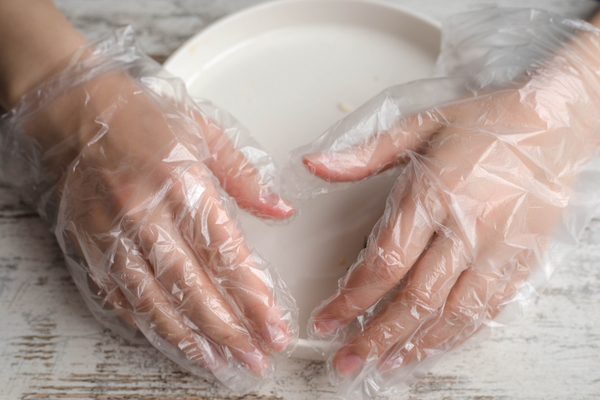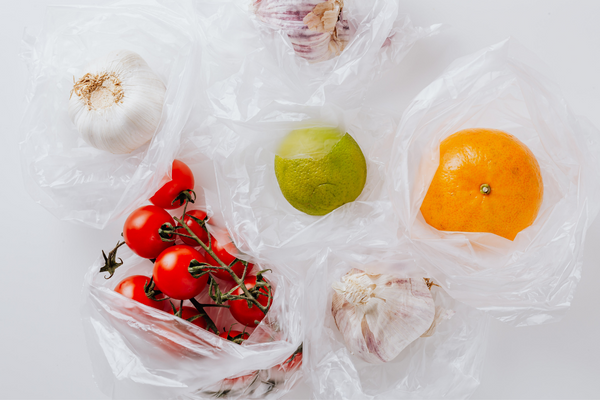What is Polyethylene Used For?
Polyethylene, also known as polythene or polyethene, is the most common plastic in domestic and industrial use today, accounting for 34% of the total plastics market in 2019. It’s in plastic bags, cleaner bottles, chemical tanks, pipes, flooring, power tools and children’s toys. The abbreviation PE is found on packaging made from Polyethylene. This is one of the most versatile and durable plastics used today, but how much do you know about it?
On this page, we aim to answer as many questions as we can about PE, starting with the simplest:
What is Polyethylene?
Polyethylene is a thermoplastic synthetic polymer with a high particle density. Like most plastics, it is a hydrocarbon, and has the simplest basic structure of all polymers, creating a repeating chain of 2 carbon and 4 hydrogen atoms: (C2H4)n.
H H H H
| | | |
C – C – C – C
| | | |
H H H H
This simple molecular structure allows a highly versatile polymer with a high particle density, which can be melted and remoulded in any shape many times over. The high particle density also means that polyethylene is water, acid and microbe resistant, forming an ideal barrier for liquid and chemical containers.
How is Polyethylene/Polythene made?

PE is manufactured through the polymerisation of ethylene or ethene (CH2=CH2), an organic compound and colourless gas derived from petroleum or natural gas. Polymerisation is a process by which monomers (single particles) are combined to create polymers (chains of multiple particles). Some types of polyethylene such as bio-polyethylene are made from ethanol from plant-based sources of hydrocarbons, such as sugar beet, sugar cane or wheat grain.
What Types of Polyethylene are there?
Because polyethylene is such a versatile polymer, it can be adapted and manipulated to varying particle densities, giving it different properties. These properties make it useful for differing applications.
High-Density Polyethylene (HDPE)
With a particle density of up to 0.96g/cm³, this is a hard plastic with a high crystalline structure, suitable for containers, tubes, and cutting boards. This type of polyethylene is highly durable.
Low-Density Polyethylene (LDPE)
The particle density of LDPE is 0.92g/cm3, which may not seem far from high-density PE but makes a lot of difference in the properties. LDPE is a soft and flexible plastic, used for plastic bags, stretch films and polyethylene sheeting. LDPE has a lower tensile strength than HDPE, meaning it is easily stretched and weakened.
Medium-density Polyethylene (MDPE)
Defined by the density range 0.926-0.940g/cm3, MDPE hits the sweet spot between the super-pliable LDPE and the toughness of HDPE. It is most often used for flexible piping and tubing, as well as liquid storage tanks such as water butts and oil tanks.
Biopolyethylene or Renewable Polyethylene
In an effort to move away from fossil fuel-based plastics, chemical researchers have developed methods of creating polythene from renewable resources, which in this case means plants. While most types of polyethylene are derived from oil and gas, the hydrocarbons within these non-renewable products are originally from ancient plant matter. While they grow, plants such as sugar beet, sugar cane and wheat photosynthesize to store solar energy as glucose.
Glucose can be fermented using yeast to generate ethanol and carbon dioxide. The ethanol is then reacted with sulphuric acid at a high temperature to form ethylene and water. This ethylene is then polymerised in the same way as ethylene from petroleum or ethane gas to produce polyethylene. Biopolyethylene is chemically the same as polyethylene from other sources, but its name highlights its more renewable source.
Biopolyethylene is not necessarily a sustainable alternative to other plastics on its own, as it is resistant to microbial breakdown and therefore does not biodegrade in the environment. Replacing all polyethylene with bio polyethylene would require huge amounts of land and water to grow the feedstocks for ethanol production. Still, it is a more renewable source of plastics than oil- or gas-based production, as the CO2 released during the ethanol fermentation process is that which was absorbed from the atmosphere during the plants’ growing stage, making this an arguably ‘carbon-neutral’ plastic.
There is also expanded polyethylene (EPE), which is a strong foam used for shock-proofing.
What are some common Polyethylene Uses in Industry?
Because of its high resistance to chemical corrosion, industrial settings often use polyethylene products in situations where chemicals and fuels are found. This polymer is also a good insulator against electrical conduction.
Polyethylene is used in:
- Chemical storage containers
- Chemical and fuel tubing
- Chemical-resistant flooring
- PVC Foam Sheets
- Fibre-optic cable sheaths
- Car parts
- Power tool casings
- Pipes
- Valves
What are some Domestic Polyethylene Uses?

As a chemical-resistant, durable and cheaply produced plastic, polyethylene has many household uses including but not limited to:
- Pipes
- Cutting boards
- Handles for kitchen appliances
- Plastic bags
- Children’s toys
- Drinks bottles
- Packaging
- Stretch films such as cling-films
- Bubble wrap
Is Polyethylene Biodegradable?
No. Because polyethylene is resistant to microbial digestion and degradation it is not biodegradable and will not break down into the soil. Always recycle polyethylene products where possible.
Can Polyethylene be recycled in the UK?
It is possible to recycle polyethylene as it is a thermoplastic, meaning it can be melted down and moulded into a new shape many times. However, it may not be possible to recycle all types of polyethylene in domestic recycling provided by your local authority.
- HDPE (High-density polyethylene) is the plastic found in bottles for milk and cleaning products and is recyclable by all UK councils. Polyethylene Terephthalate (PET) is highly recyclable by all UK councils.
- LDPE (Low-density polyethylene) is the flexible plastic found in bread bags, shopping bags, and magazine packaging. It is highly recyclable, but most UK councils do not offer kerbside recycling for this type of plastic. However, most supermarkets have collection points for LDPE recycling.
FAQs
Are polyethylene bags recyclable?
Polyethylene bags are made from LDPE, which is recyclable, but most UK councils do not offer kerbside recycling for this type of plastic. However, most supermarkets have collection points for LDPE recycling.
Are polyethylene gloves food safe? Yes. Polyethylene is a non-toxic plastic in its solid form and is used for food packaging, kitchen utensils and food handling products. Do not melt.
When was polyethylene invented? Who invented polyethylene?
Hans von Pechmann synthesized polyethylene for the first time in 1898. The german chemist accidentally invented polyethene while investigating diazomethane, a gas used to convert carboxylic acids to methyl esters.
What happens when polyethylene is heated?
At around 110-130oC, polyethylene melts into liquid or molten polyethylene. Because it is a thermoplastic (as opposed to a thermoset) it will retain its new shape after it cools. This is the process of recycling polyethylene into new products.
Will polyethylene hold diesel?
Yes, polyethylene is corrosion-resistant and water-resistant. High-density polyethylene is used in fuel tanks and piping.
Why isn’t polyethylene biodegradable?
Biodegradation is when microorganisms such as fungi and bacteria digest materials using enzymes, breaking them down into smaller parts to access the energy held inside them. The atoms in polymers such as polyethylene are held together by strong bonds which cannot be broken by microbial enzymes. Just as you wouldn’t be able to digest a plastic bag, microbes can’t either, which is why these polymers are not biodegradable.




